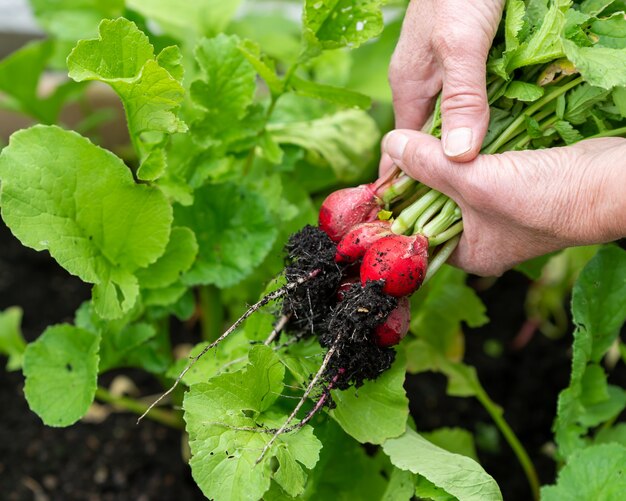Radishes are a popular and easy-to-grow crop for gardeners, known for their crisp texture and peppery flavor. However, one common issue that can affect radishes is cracking. Cracking can occur for various reasons, often related to inconsistent watering, temperature fluctuations, or nutrient imbalances. Recognizing the early signs of cracking can help you take action to prevent further damage. Here are ten early signs to look for:
1. Surface Cracks
The most obvious sign of cracking is the appearance of small fissures on the surface of the radish. These cracks may start as tiny lines and gradually become more pronounced as the radish continues to grow.
2. Uneven Growth
If your radishes are growing unevenly, with some bulbs appearing much larger than others, it could indicate stress. Uneven growth often leads to cracking, as the larger bulbs may swell too quickly for the skin to accommodate.
3. Soft or Mushy Spots
Cracked radishes may develop soft or mushy areas, indicating that the flesh is deteriorating. These spots can also attract pests and diseases, further compromising the crop.
4. Wilting Leaves
Wilting leaves can signal that the plant is under stress, which may lead to cracking. If your radish plants appear droopy, check the soil moisture levels and consider adjusting your watering routine.
5. Leaf Color Changes
Healthy radish leaves are typically vibrant green. If you notice yellowing or browning leaves, this can indicate nutrient deficiencies or improper watering practices that may contribute to cracking.
6. Uneven Watering
Radishes require consistent moisture for optimal growth. If you’ve been watering sporadically or allowing the soil to dry out completely between waterings, the radishes may crack as they absorb water too quickly after a drought period.
7. Temperature Fluctuations
Rapid changes in temperature, particularly during the growing season, can stress radish plants. If your area experiences significant temperature swings, monitor your radishes for signs of cracking.
8. Pest Damage
Certain pests, such as root maggots, can damage radishes and make them more susceptible to cracking. Look for signs of pest activity, including holes in the leaves or visible larvae in the soil.
9. Nutrient Imbalances
Excessive nitrogen can promote rapid foliage growth at the expense of root development, leading to cracked radishes. Test your soil to ensure a balanced nutrient profile, particularly potassium and phosphorus, which are essential for root health.
10. Harvesting Too Late
Allowing radishes to grow too long in the ground can lead to cracking, as they become oversized. Monitor their growth and harvest radishes as soon as they reach the desired size to prevent this issue.
By paying attention to these early signs, you can take proactive measures to prevent your radishes from cracking. Maintaining consistent watering, monitoring soil health, and addressing any stressors promptly can help ensure a bountiful and healthy radish crop. Happy gardening!







